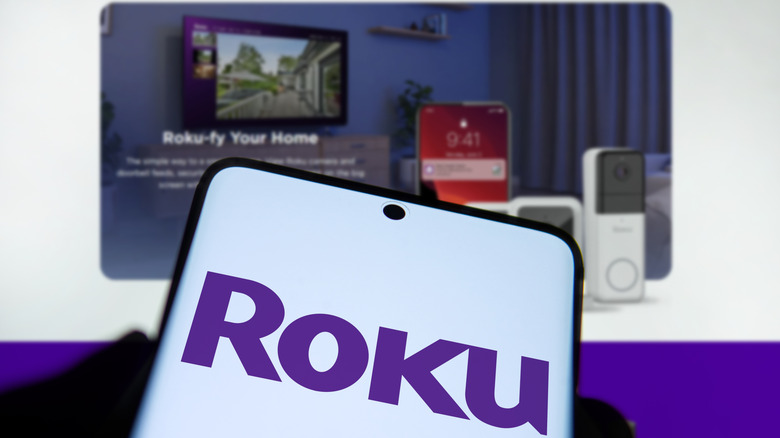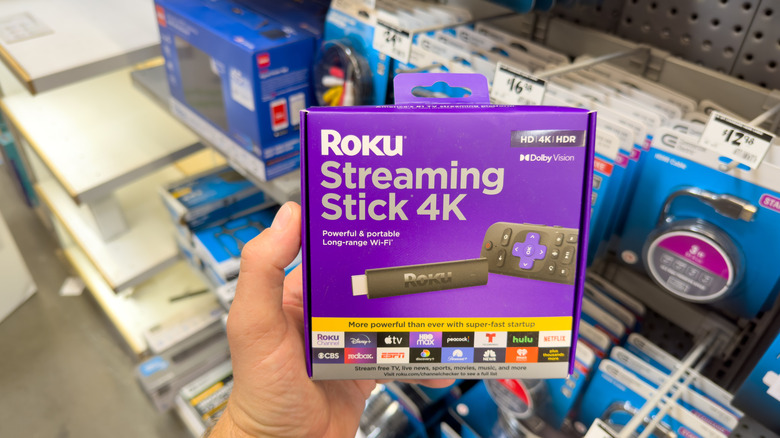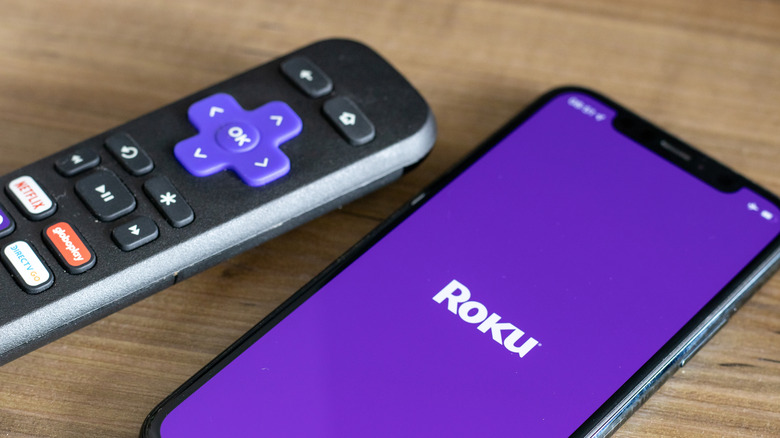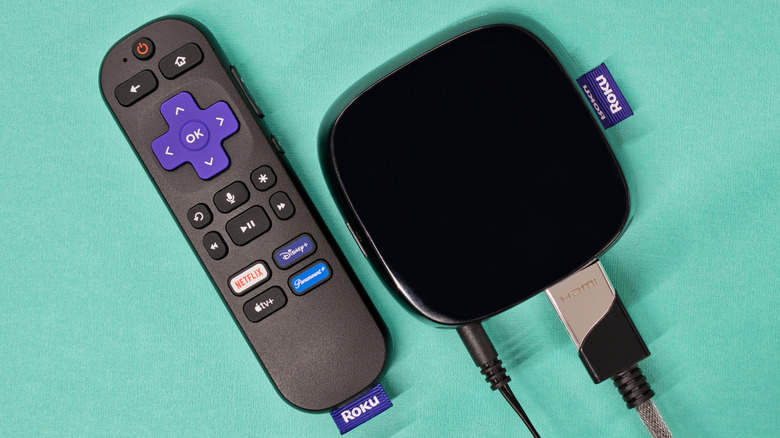Is Your Roku Overheating? Here's What To Do
In general, it's best to stop any device from overheating as soon as possible to avoid causing temporary or permanent damage, but how do you know if your Roku is overheating? The most straightforward method may be if your Roku itself is hot to the touch, especially if your device is not being used or if the components have been affected enough that its lighting indicators are no longer functioning.
But even if the device isn't physically hot yet to touch, it may have already exceeded its ideal operating temperature. That's when the status light acts as a useful indicator: it'll turn white when the device is ready for use and flash red when it doesn't have enough power. According to Roku, you'll be able to notice that your streaming stick shows a solid red light if it is overheating. Your Roku device may also issue a warning on the screen when it is overheating. Typically, this will appear in the upper-right corner of the screen, though some manufacturers will set their sensors to release overheating warnings before the temperature is high enough to cause problems, so your device may not be doomed the moment the warning goes out.
If you are seeing a sign of overheating, don't panic. Here are some quick ways to get your Roku back to a safe temperature, followed by tips on how to make sure it does not happen again.
What to do if your Roku device is overheating
With many Roku smart home devices, the best response to overheating is usually unplugging it immediately. After removing it from the power source, give it a few minutes to cool down by itself. Typically, Roku recommends leaving an overheating device, like a streaming player, alone for at least ten minutes before trying to turn it on again. After you're sure the device has had time to rest, you can reset your Roku streaming stick or other device. If this doesn't immediately work, let it cool down for a little longer and try again.
During this process, you should also check the cables and adapters that came with your device and make sure they're what you're using. Third-party cables and adaptors can cause reliability issues because they were not tested to be fully compatible with Roku devices. While third-party cables and adapters may work at first, they may also cause issues over time with your Roku's internal components and even invalidate your official warranty. If you've lost your original cables, it's best to buy replacement sets on Roku's official website instead.
How to keep your Roku from overheating
Each Roku device has its own safe operating and non-operating temperature. For example, Roku-branded TVs are designed to only work with ambient temperatures up to 95 degrees Fahrenheit (or 35 degrees Celsius) when in use and 113 degrees Fahrenheit (or 45 degrees Celsius) when turned off. You'll need to make sure to keep your device operating within that range to prevent unintended damage.
One easy way to do this is not exposing your Roku devices to direct sunlight, even when not in use. You'll also want to put smaller devices somewhere well-ventilated, so this means not placing them inside consoles, drawers, or similar places that have limited airflow. Third, make sure that you don't place it on top of other heat-generating electronics, like CPUs and consoles like the PS4 which are also known to overheat already.
It's always good to be proactive when it comes to protecting your electronics. If it's really not possible to put your streaming device in a better location, Roku does offer free HDMI extenders to people who need the extra distance. All you have to do is fill out their official request form on their website, follow their instructions, and wait for them to deliver it to your address. For Roku Streaming Stick owners, you can also buy a Roku Power Adapter with Extender Cable on the official website.
What to do if your Roku device is always overheating
If you've followed all the tips above but still encounter overheating, the issue might not be with your usage or device's environment. Should this be the case for you, you may want to contact Roku support for additional guidance, especially if the device is relatively new or fresh out of the box. If it is still under warranty, you might even be qualified for a replacement, especially if it is due to a manufacturing defect.
Typically, Roku lets you return products from the official Roku website within 30 days of purchase. In addition, your device might be eligible for a warranty replacement, which can be up to a year after your initial purchase. However, you'll want to confirm your particular device's coverage, especially if you purchased it via a third-party retailer.
Unfortunately, if you're using an older Roku device, it might also be due for an upgrade. As with many types of electronic devices, even regular use can lead to natural wear-and-tear and component degradation. It may even be time to explore other streaming alternatives as well, especially if you want to be able to access more exclusive content. In 2024, there are a ton of tough Roku competitors, like Apple TV, Google TV, and Amazon Fire TV, which should definitely be on your radar.



